Row DTLA is emerging as a new retail anchor in the Arts District of Downtown Los Angeles where project developer Atlas Capital Group is converting six historic industrial buildings into a 1.5 million-square-foot mixed-use project.
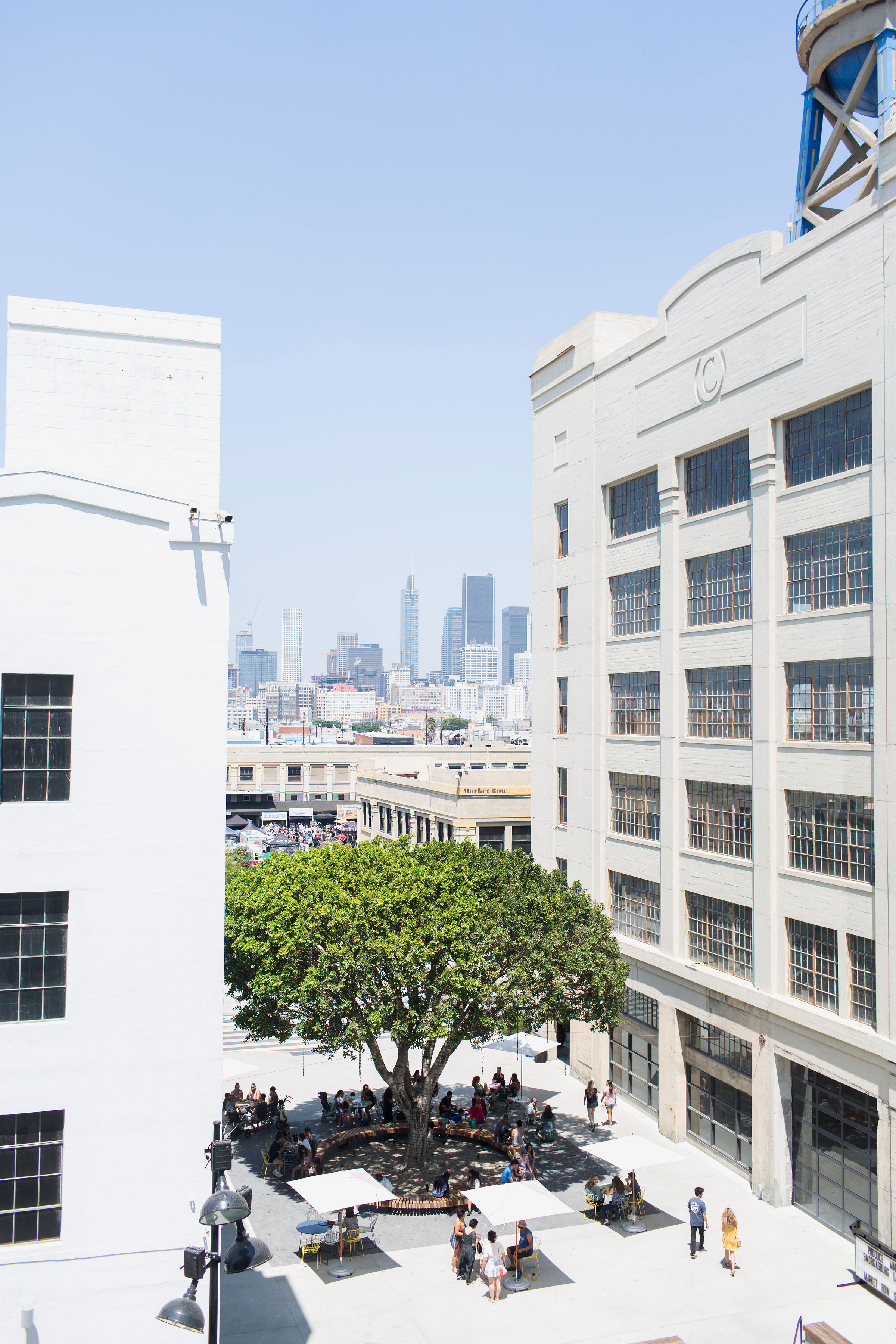
The majority of the project — about 1.3 million square feet — is devoted to creative office space that has already attracted tenants that include Adidas, luxury private club operator Soho House and leading omni-channel commerce platform Shopify. Retail and restaurants will occupy about 200,000 square feet. The first shops began opening in spring 2017, and there are now about 100 retailers and 15 restaurants, and more on the way in 2019 as additional space comes online.
Row DTLA is part of a bigger retail resurgence underway in downtown L.A. “What they are doing is indicative of what we think of as the future of retail, which is that it is unique, innovative, experiential and engaging,” said Nick Griffin, executive director for Los Angeles’ Downtown Center Business Improvement District.
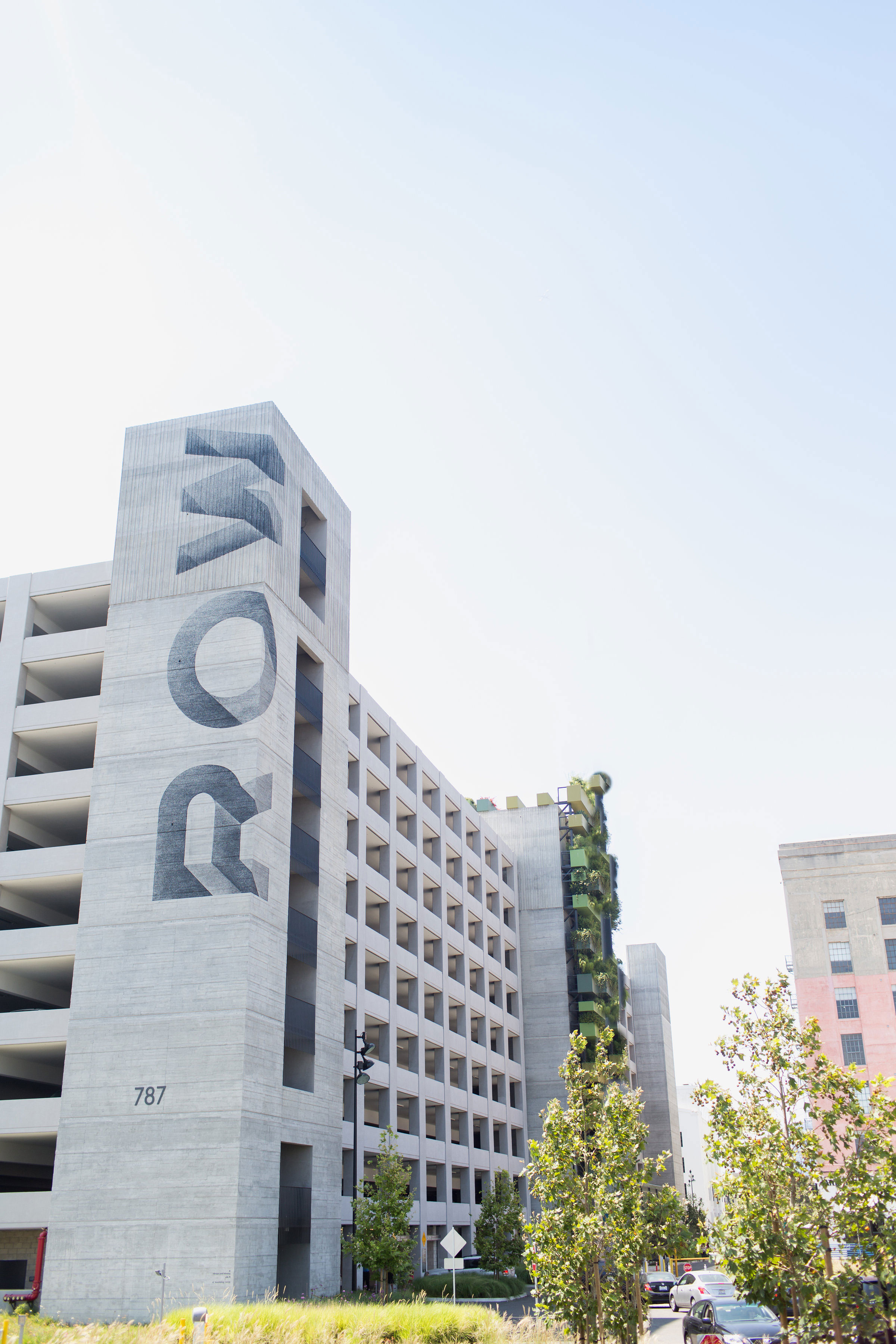
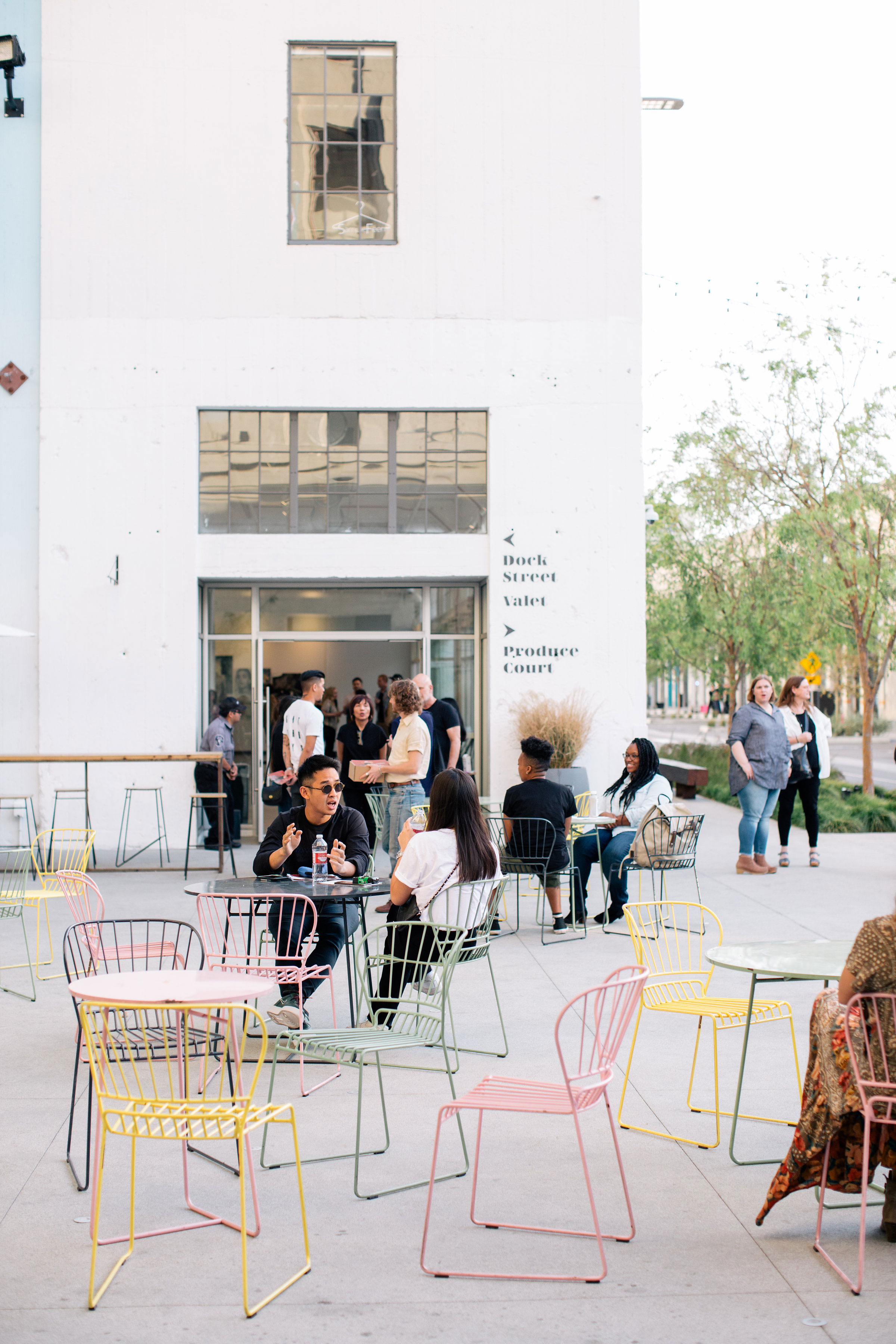
The project is attracting tenants that reflect the energy and creativity in the downtown market, says Griffin. Row DTLA is located at the far southeast end of downtown. The fact that it has become a destination for cool brands, businesses and consumers speaks volumes to downtown’s profile and how much it is really on the map these days, he adds. Row DTLA also features an open-air public market, plazas and green space and a newly built 4,000-space parking garage that boasts its own rooftop park.
Row DTLA occupies part of a 32-acre site formerly occupied by the L.A. Terminal Market, which was once the center of the city’s produce trade. In fact, Row DTLA has maintained that tradition and continues to host the city’s wholesale produce market that operates Mondays through Saturdays. The structures were built by the Southern Pacific Railroad between 1917 and 1923, and the repurposed space showcases original features, including the exposed concrete, as well as wood floors and brick walls in some of the buildings.
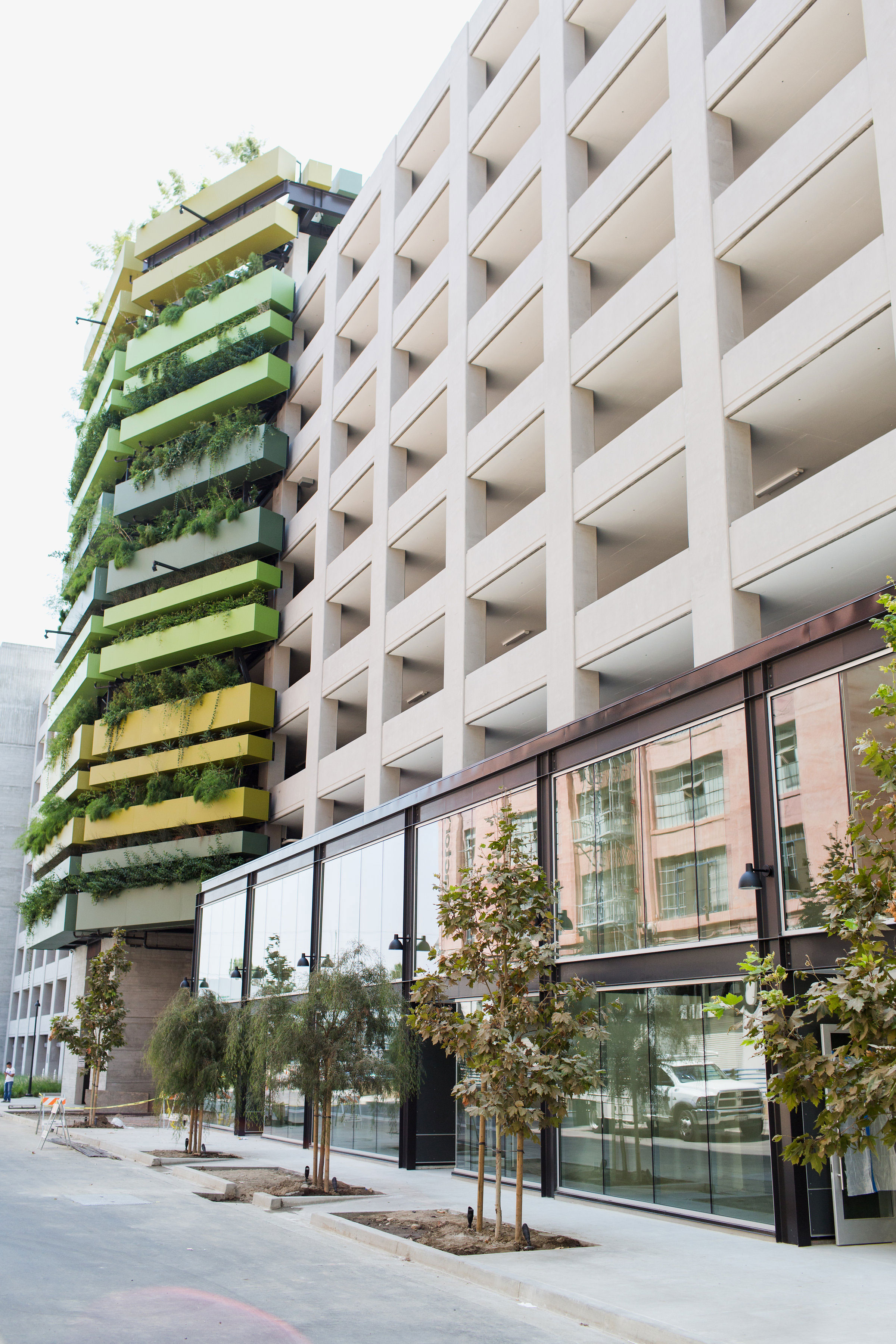
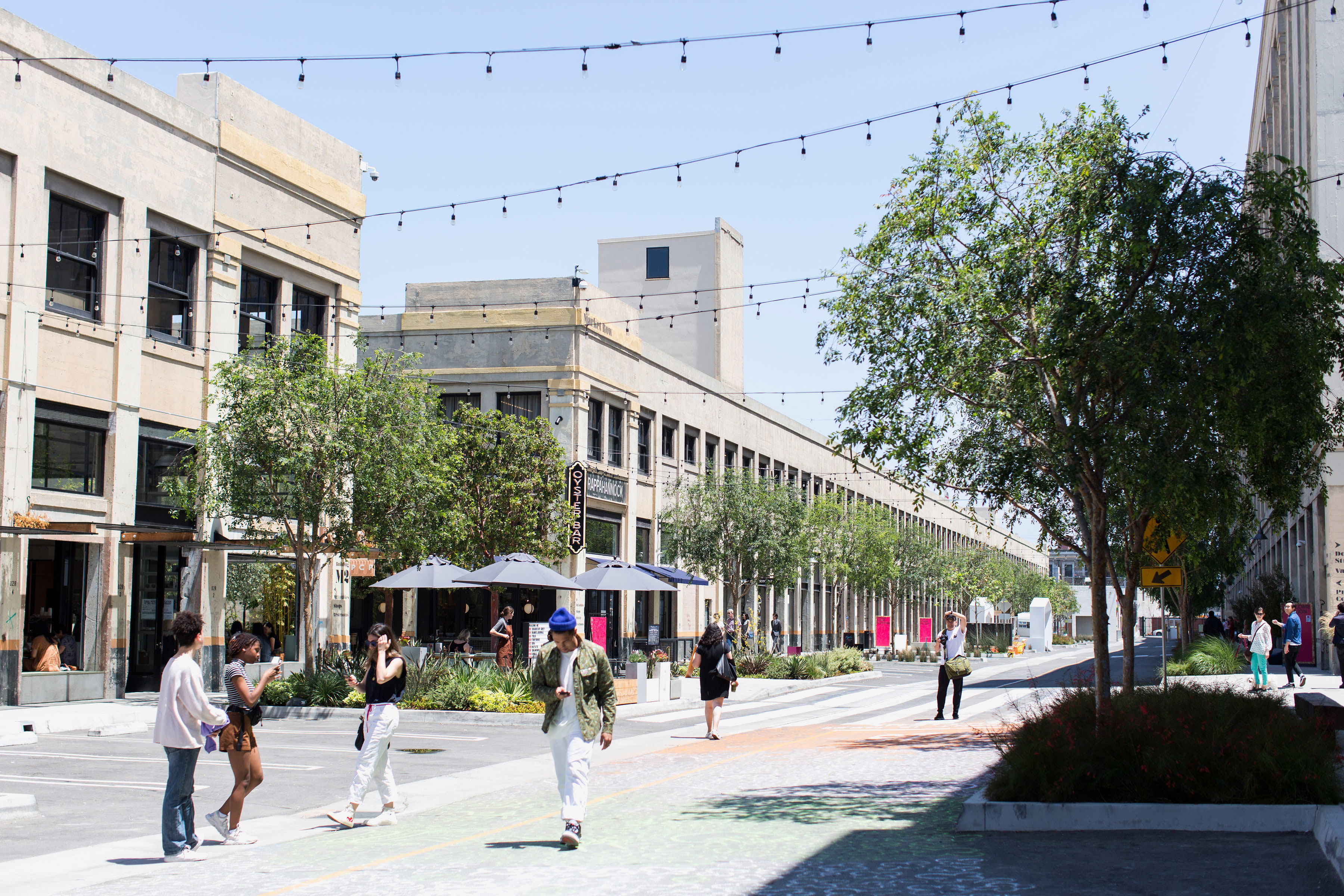
“The goal of the whole team was to really have as light of a touch as possible, because the buildings had such incredible architecture, character and patina to them that you couldn’t come close to recreating those details,” said David Fishbein, co-founder of Los Angeles–based Runyon Group, which is in charge of retail leasing for Row DTLA.
The retail portion of the project is home to a variety of tenants selling everything from fashion and home goods to wine and chocolate, along with yoga, fitness and art studios. However, visitors won’t find any of the typical national chains. “To us, what makes shopping exciting is that element of discovery, which has really disappeared in a lot of places with developments that include the same stores and restaurants all over the place,” Fishbein said. “So for us we really wanted to do something that was really distinctive and had its own identity and would be a draw for all of Los Angeles.”
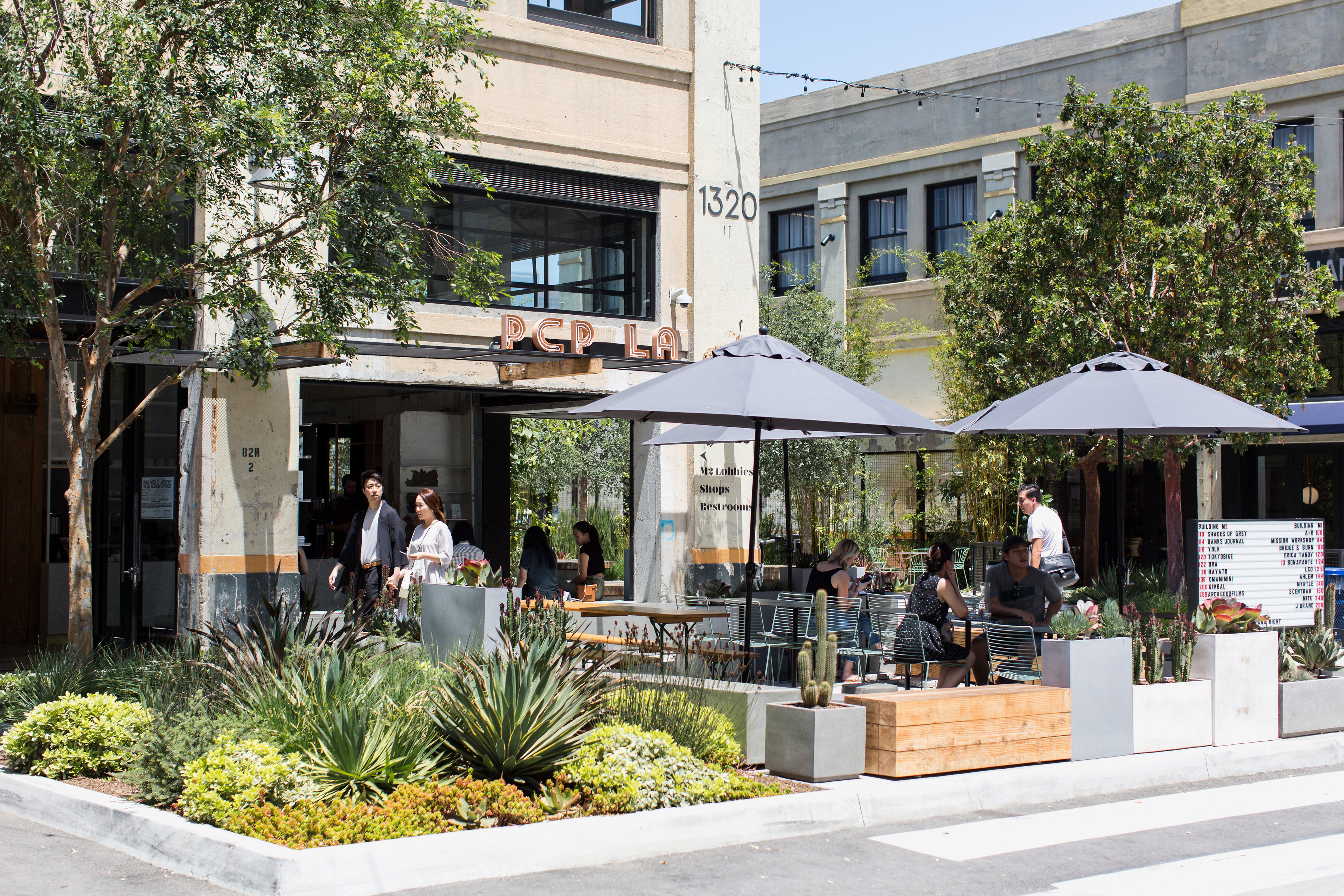
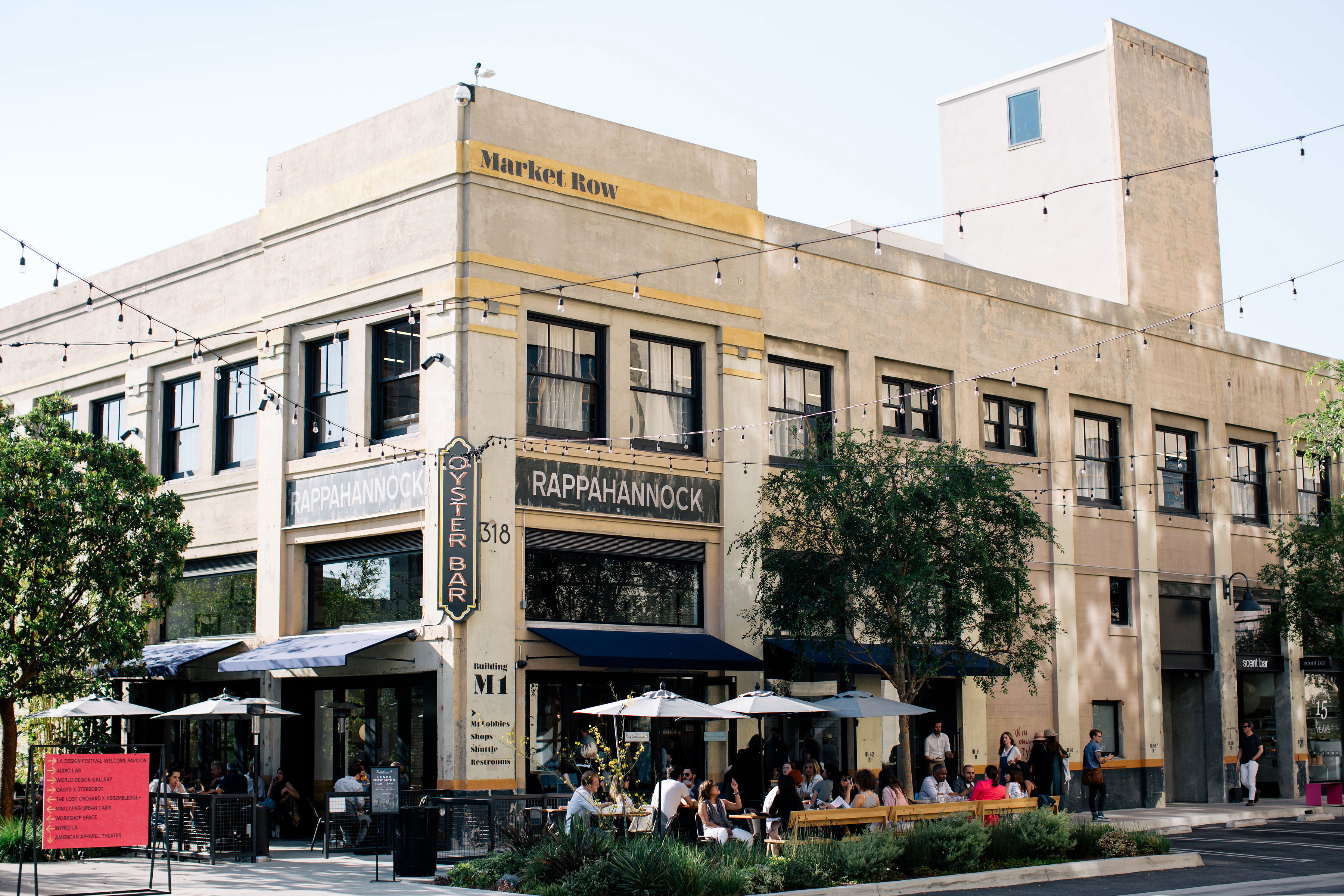
Tenants include local, national and international retailers, such as the Paris-based menswear store 13 Bonaparte, and the first U.S. location for tokyobike, an independent bicycle company founded in Japan. As of November, about 65 percent of the retail and restaurant space was open and leased with additional space coming online. For example, one of the largest tenants, a bakery and café concept called The Manufactory, opened its 40,000-square foot space in December.
The project team also recognized the opportunity to utilize the 5-acre open-air produce market space on Sundays by bringing in a West Coast version of Smorgasburg, the popular food market that originated in Brooklyn, N.Y. The weekly food market features 60-70 vendors, including up-and-coming chefs and food concepts from around the city.
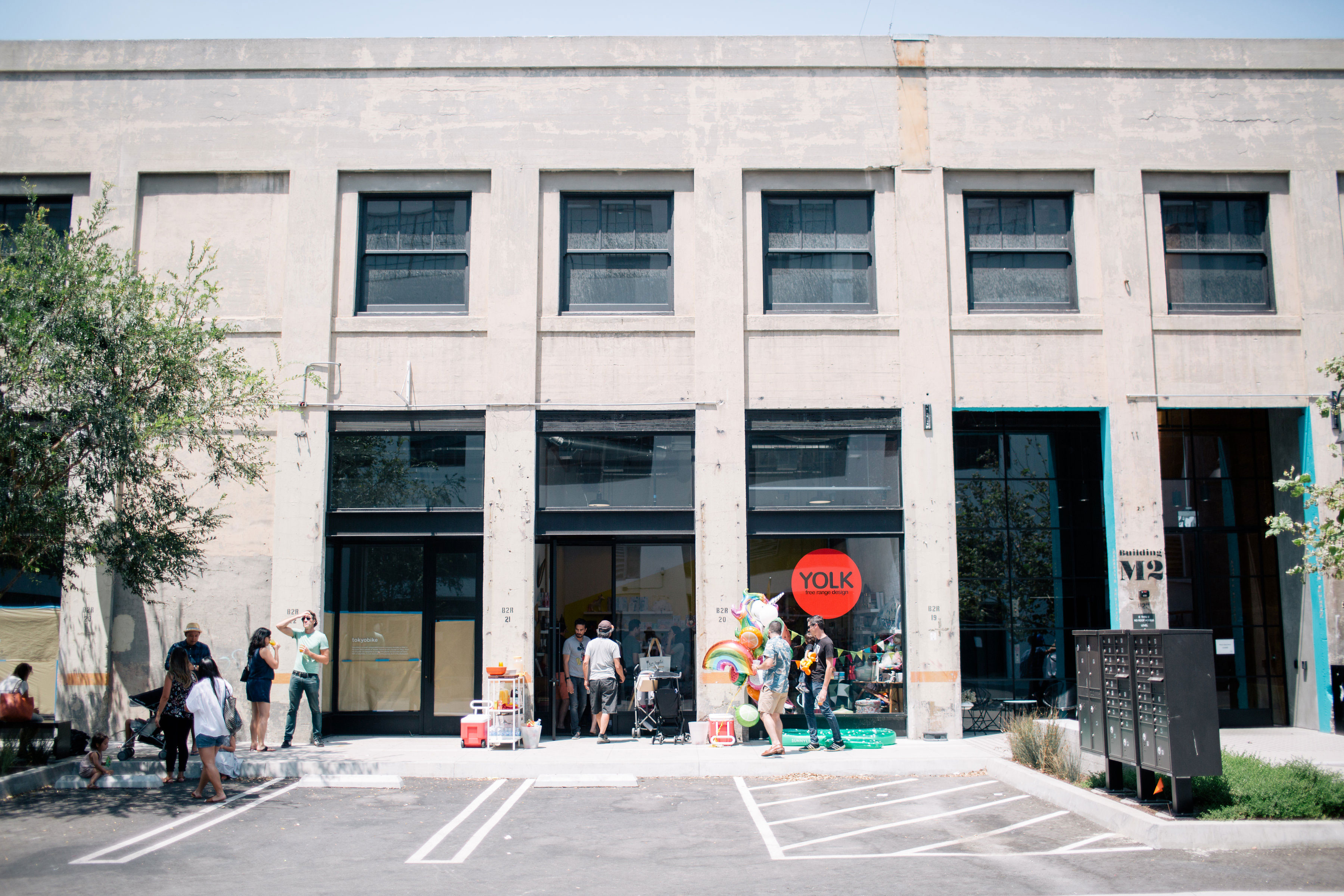
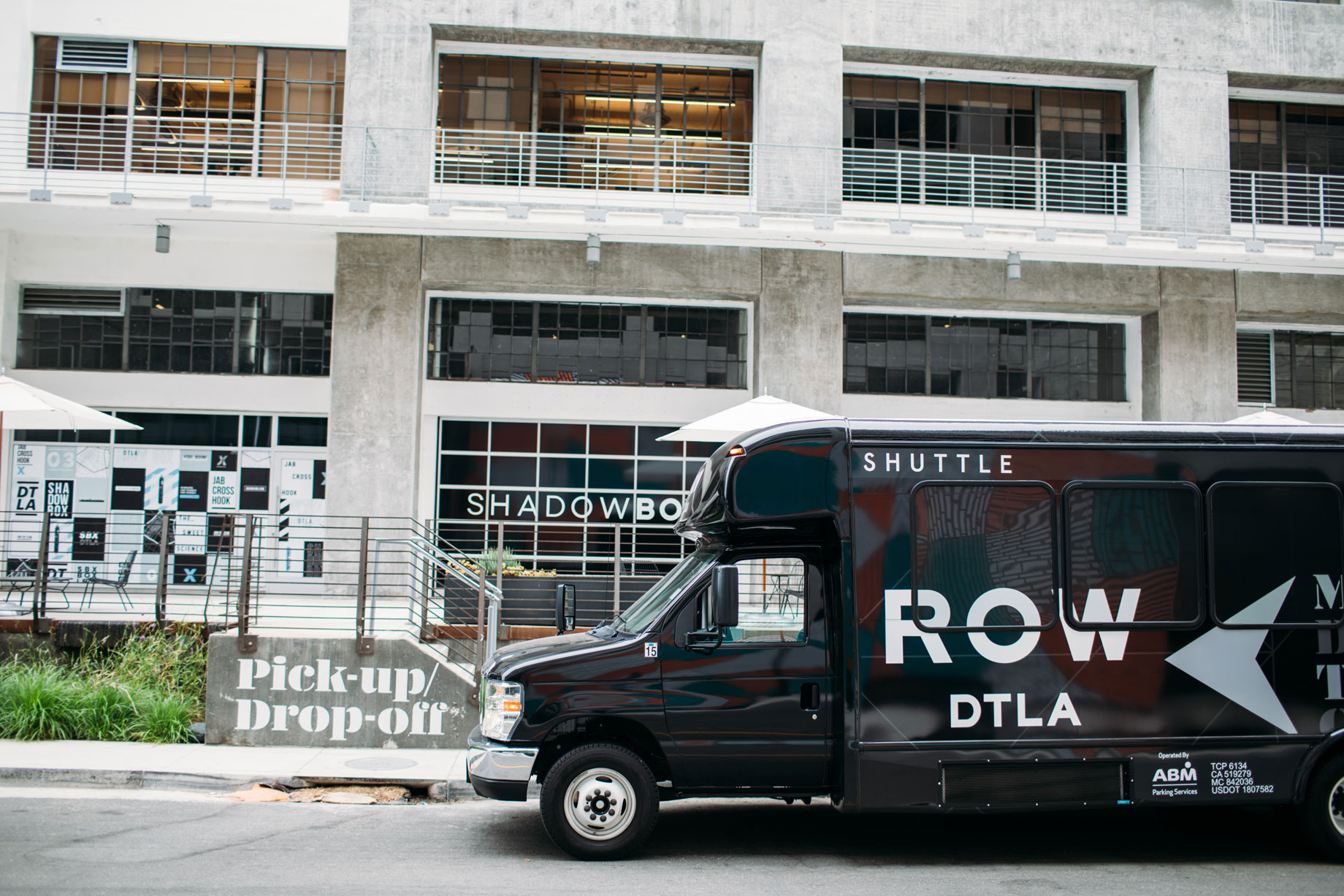
“Smorgasburg was a very thoughtful way for us to get people from around Los Angeles used to coming down to the property well in advance of us opening the main portion of it to the public,” said Fishbein. Since its debut in June 2016, Smorgasburg has attracted between 10,000 and 15,000 people every Sunday.
Row DTLA has taken advantage of its ability to accommodate large outdoor events by hosting a variety of festivals, concerts, art shows and food trucks. For example, in June 2017 it hosted the Los Angeles Design Festival that drew 10,000 interior designers from around the world. In addition, developers have made a concerted effort to connect the project to its Arts District neighborhood. “Art is such a big piece of the identity of the neighborhood, and it was really an important component for us to incorporate in the long-term development of the project,” said Fishbein.
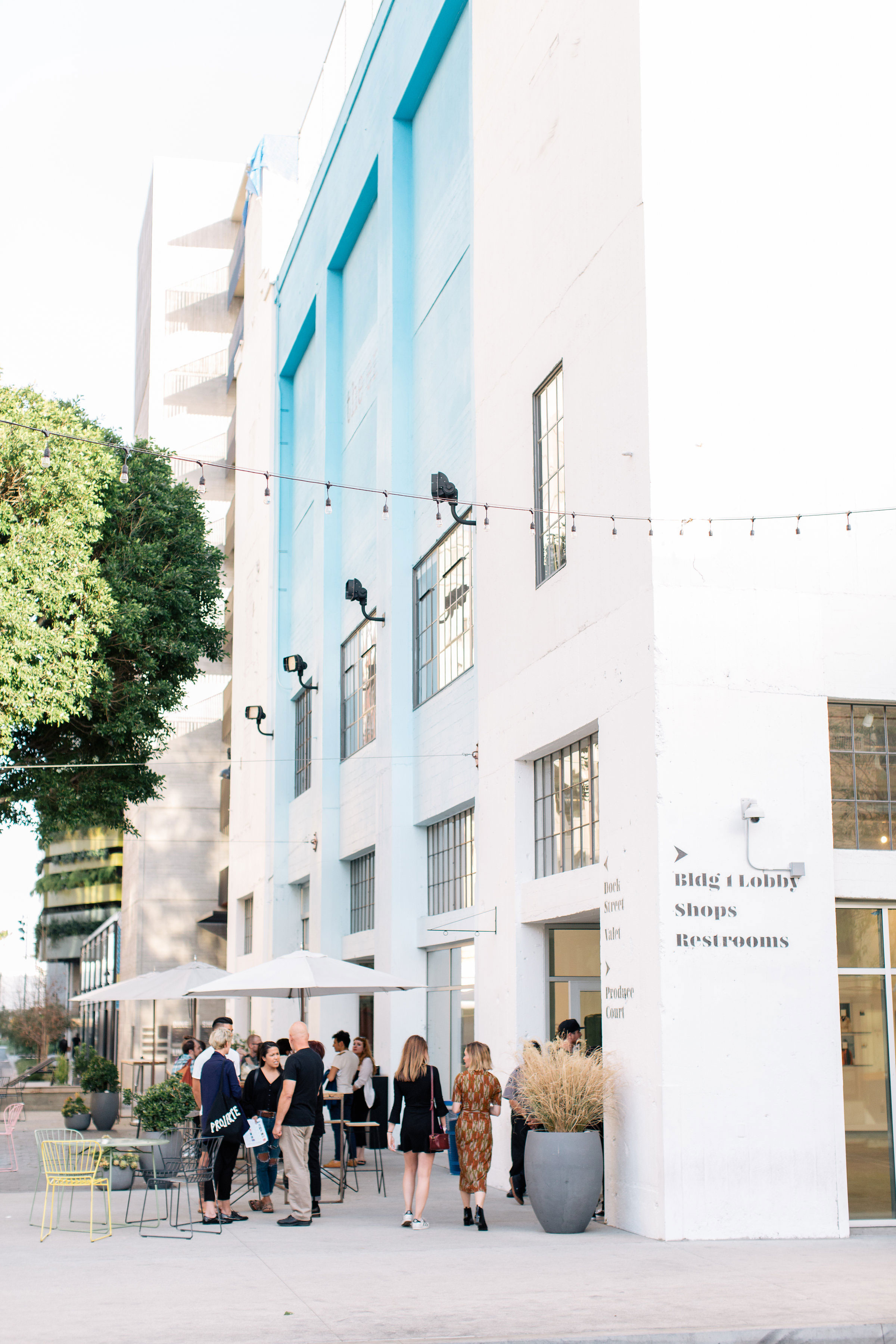
For example, the developer reached out to local artist Retna to create four large murals on the exteriors of three of the buildings. The artist has since relocated his studio and gallery to Row DTLA. Another well-known artist, Carly Kuhn, aka The Cartorialist, created a series of line drawings on the exterior of one of the buildings. “So," Fishbein said, "we’re always looking for local talent who can use these buildings as a canvas to do something really large scale and memorable."
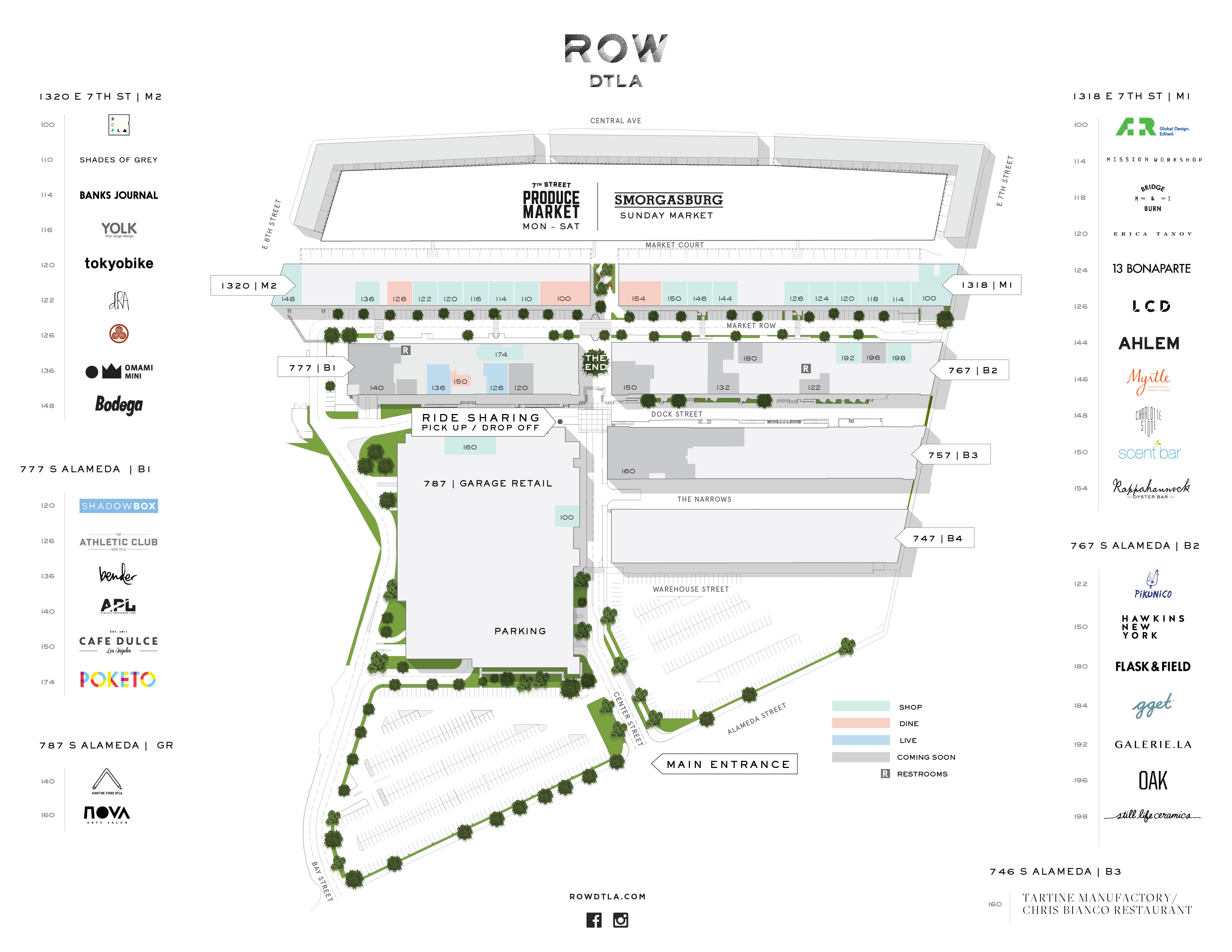
By Beth Mattson-Teig
Contributor, Commerce + Communities Today


